
No-weld Face Mounted Timber Paling Gates
Introduction
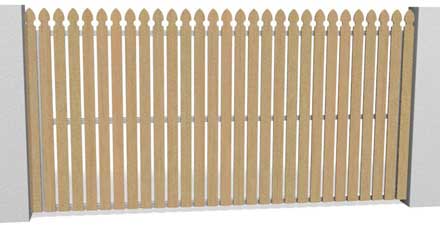
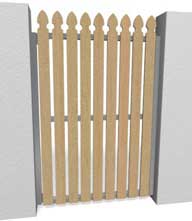
Gates with face mounted vertical timber palings have the palings screwed to the front of a frame made from No-weld Box Section framing that can be made quickly and economically onsite or in the workshop what ever is easiest. Swing gates can go up to 4m wide x 2m high and sliding gates 6m wide x 2m high. Gates higher than 1.2m require a middle rail (as illustrated). Gates wider than 1.5m require a middle stile ... READ MORE
Sliding gates do require a sliding gate channel see No-weld sliding gates and No-weld Telescopic Sliding Gates to learn more.
No-weld frames may have many different finishes READ MORE
What's included in a No-weld Paling Gate DIY Kit?
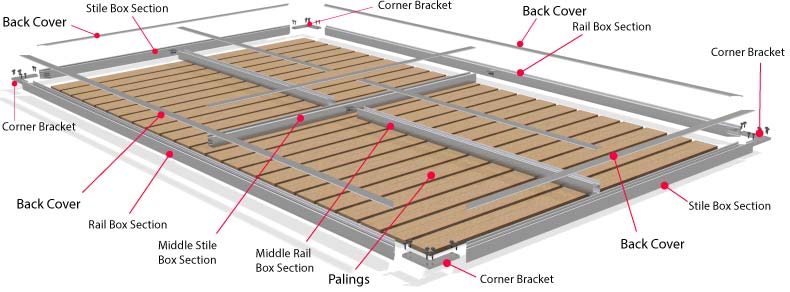
Kits come pre-cut and pre-drilled ready to assemble. Palings are vertical only.
Getting a Quote and Ordering
You can get an instant quote for a DIY gate kit or if there's an installer in your area full installation from one of our Instant Quote pages:
Instant Quote Pedestrian GateInstant Quote for Driveway Gate
Things to Consider
The most popular timber paling being the 100mm wide x 16mm pine paling. There are also various different styles of 75mm wide palings with decorative tops such as the classic colonial paling. Palings can also be hardwood.
Gate Width verses Gap between Palings.
There can be any gap between palings or palings can be hard up against each other with hardly any gap at all. For complete privacy and noise reduction palings can be overlapped.
The exact gap between palings depends on how the palings fit into the width of the gate, if you want a gate 3m wide with 20mm gaps between palings you will require 25 x 100mm wide palings with an actual gap of 20.8mm although this depends on how consistent the width of the timber is.
If the palings are to be hard up against each other the exact width of the gate will be determined by the number and width of the palings. If the palings are 100mm wide then gates widths a limited to 100mm increments, whereas 75mm palings will be 75mm increments, unless you want to rip the last one down to fit. Timber paling widths do vary a little so you'll most likely end up ripping one down anyway.
Making No-weld Paling Gate kits up yourself.
If you're in the gate or fence business and want to save money as well as get jobs done faster (customers like it done fast), you can do so by making No-weld paling gate frame kits up yourself. All you need is a good mitre saw, lengths of No-weld framing and hardware. If you keep No-weld materials in stock you could custom make paling gate frame kits up yourself in a matter of hours onsite, assemble them and then install, so you don't need a workshop just somewhere to store the material and a suitable vehicle. This will give you a significant edge over your competition both time wise and price wise.
You can order No-weld framing and hardware at the No-weld Online Shop.
Making these gate frames requires mitred cuts, for technique on how to mitre cut No-weld framing accurately and cleanly with no burrs and drill holes for corner brackets see our our Guide to Cutting and Drilling No-weld Framing. There are other styles of gates too see What can be Made with No-weld.
Trade Customers
If you become one of our trade customers we can pass work onto you for free for No-weld gates, infill panels and fencing. You can either work as a fabricator only for others to install or as a fabricator and installer. See below on how No-weld paling gate frames are assembled.
For more information see our No-weld for Trade and Wholesale page
Assembly Instructions for No-weld Paling Gates

Place the pre-cut and drilled frame members on clean blocks of polystyrene foam or similar non-scratching material laid out on a flat surface with the open back faces up.

Gates wider than 1.5mm need to have one or more middle stiles (one every 1.5m or so) and gates higher than 1.2m need a middle rail. They are screwed to the frame with small angle brackets pre-fitted to the rails.
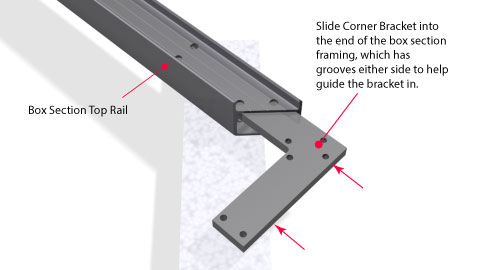
Corner brackets are required to hold the frame together. These are fitted by sliding them into the ends of the top and bottom rails to begin with, which have grooves in both sides to help guide the bracket in.
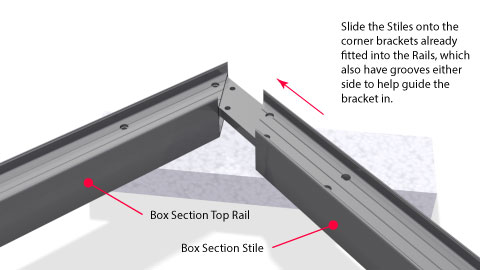
Then slide the stiles onto the corner brackets of the top rail. The stiles also have grooves either side to help guide the brackets in.
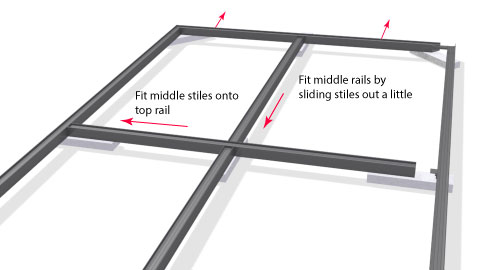
If there are middle stiles these need to be fitted to the top rail next. If there is a middle rail this needs to be fitted between stiles before the bottom rail is fitted. A middle rail is broken up into more than one piece if there are middle stiles.

Then slide the bottom rail onto the end stiles first followed by any middle stiles.

Then fit four larger tek screws into each corner bracket using a cordless drill in the pattern illustrated to hold the frame together for now.
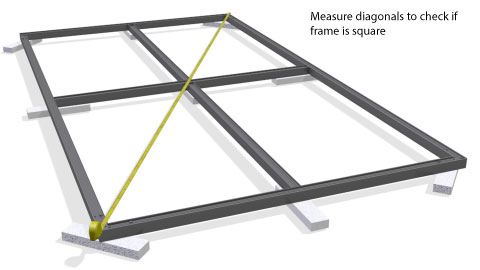
Check the diagonals of the frame to make sure it is square, if not loosen all bracket screws, adjust the diagonals so they are the same then tighten the screws back up again. The rest of the screws for the corner brackets can now be fitted.
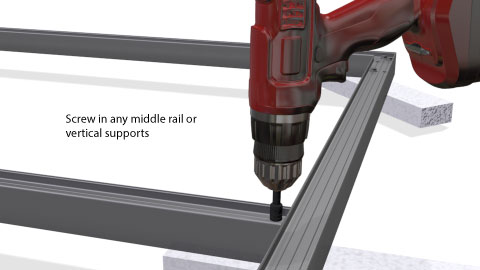
Now the smaller Tek screws can be fitted into any middle rails or stiles to hold them firmly in place.
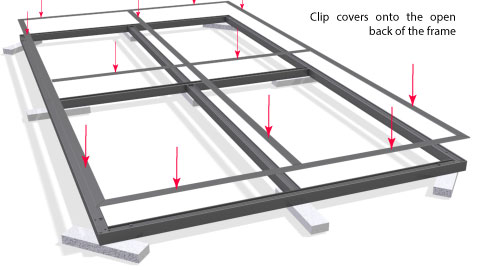
Covers are then clipped into the back of the frame to cover the screws. See Guide to Fitting No-weld Hardware for technique on how to do this.
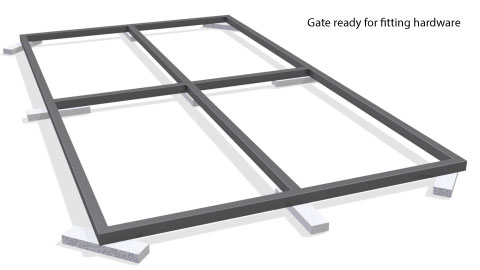
Now the hardware such as hinges, latch, stop or guide rail can be fitted to the back of the frame. See Guide to Fitting No-weld Hardware. The palings can be screwed to the front of the frame after the frame is installed.